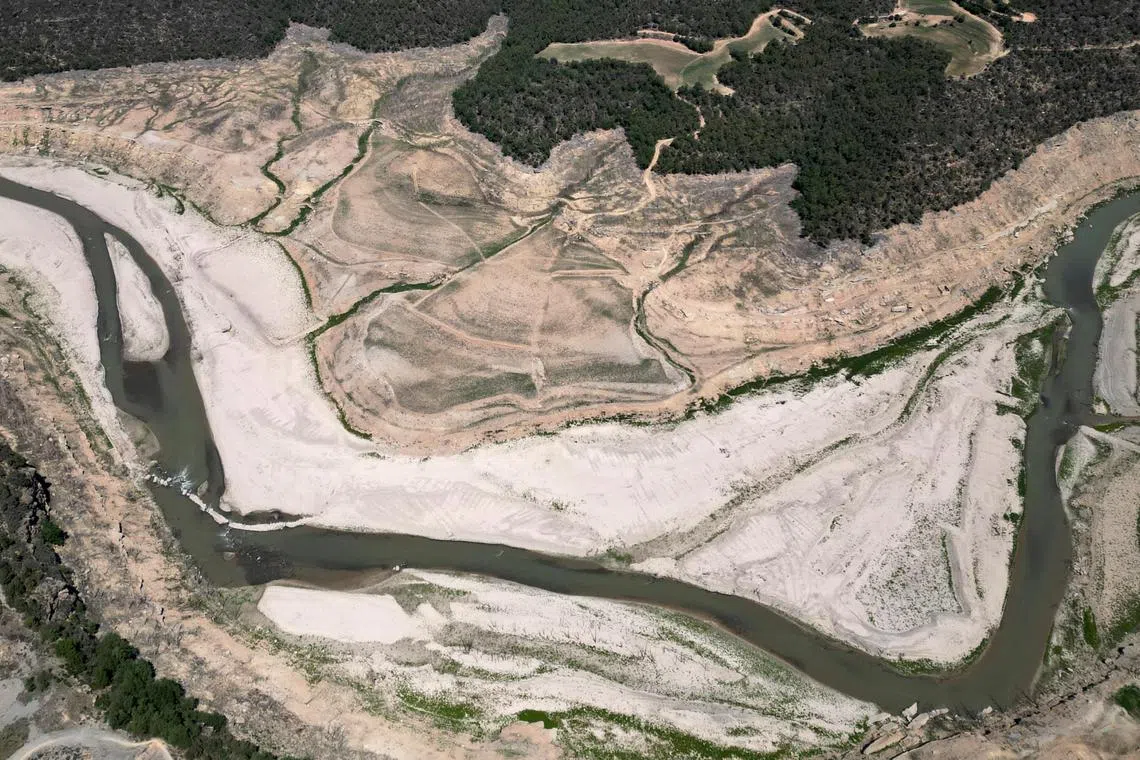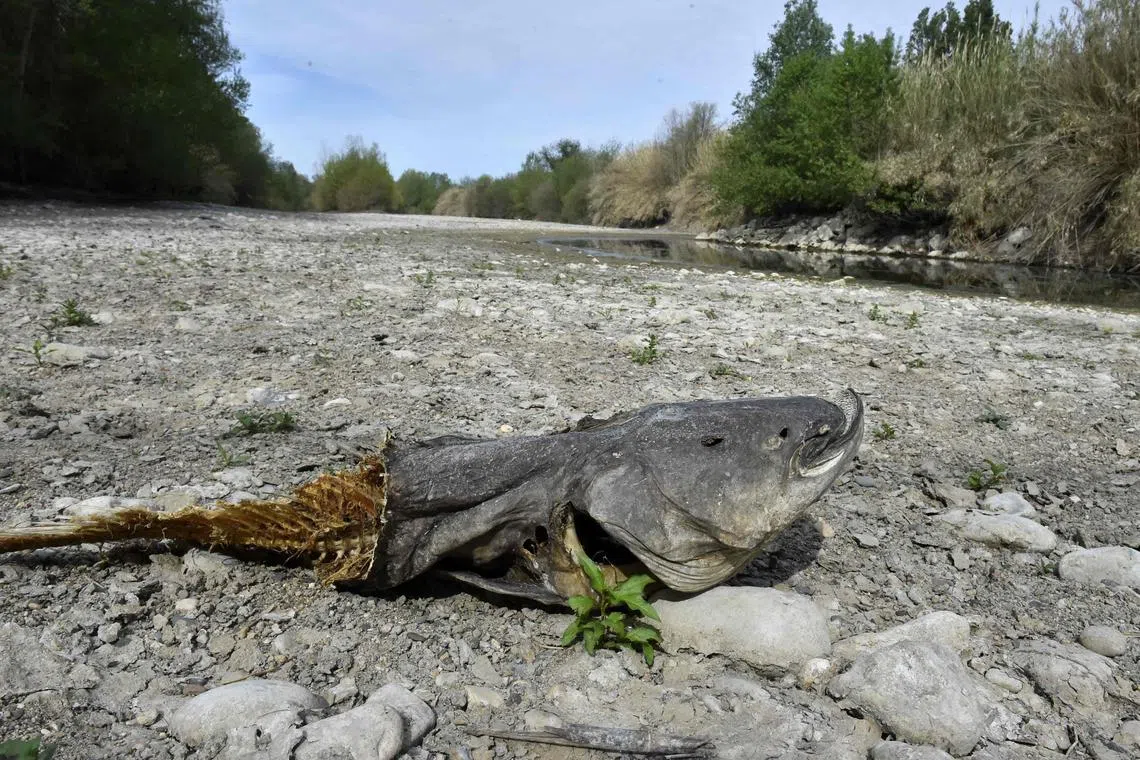Southern Europe braces itself for climate change-fuelled summer of drought
Sign up now: Get ST's newsletters delivered to your inbox

The Rialb reservoir as drinking water supplies have plunged to their lowest level since 1990 due to extreme drought, in Bassella, Spain.
PHOTO: REUTERS
Follow topic:
BRUSSELS – Southern Europe is bracing itself for a summer of ferocious drought, with some regions already suffering water shortages and farmers expecting their worst yields in decades.
As climate change makes the region hotter and drier, years of consecutive drought have depleted groundwater reserves. Soils have become bone dry in Spain, southern France and Italy. Low river and reservoir levels are threatening this summer’s hydropower production.
With temperatures climbing into summertime, scientists warn that Europe is on track for another brutal summer, after suffering its hottest on record last year – which fuelled a drought that European Union researchers said was the worst in at least 500 years.
So far this year, the situation is most severe in Spain.
There is little chance at this point of rainfall resolving the underlying drought, either. “At this time of the year, the only thing we can have are punctual and local storms, which are not going to solve the rainfall deficit,” Prof Olcina said.
Seeking emergency EU assistance, Spain’s Agriculture Minister Luis Planas warned that “the situation resulting from this drought is of such magnitude that its consequences cannot be tackled with national funds alone”, according to an April 24 letter sent to the European Commission (EC) and seen by Reuters.
Climate change trend
Southern Europe is not alone in suffering severe water shortages this year. The Horn of Africa is enduring its worst drought in decades, while a historic drought in Argentina has hammered soya and corn crops.
More frequent and severe drought in the Mediterranean region – where the average temperature is now 1.5 deg C higher than 150 years ago – is in line with how scientists have forecast climate change will impact the region.
“In terms of the climate change signal, it very much fits with what we’re expecting,” said Professor Hayley Fowler from Newcastle University, who specialises in climate change impact.
Despite these long-held forecasts, preparation is lagging. Many farming regions have yet to adopt water-saving methods like precision irrigation or switch to more drought-hardy crops, such as sunflowers.
“Governments are late. Companies are late,” said climate scientist Robert Vautard of France’s Pierre-Simon Laplace Institute. “Some companies are not even thinking of changing the model of their consumption; they are just trying to find some miraculous technologies that would bring water.”
France is emerging from its driest winter since 1959, with drought “crisis” alerts already activated in four departmental prefectures, restricting non-priority water withdrawals – including for agriculture, according to government website Propluvia.

A dead catfish on the dried river bed of the Agly River in Rivesaltes, southwestern France.
PHOTO: AFP
Portugal, too, is experiencing an early arrival of drought. Some 90 per cent of the mainland is suffering from drought,
In Spain, which saw less than half its average rainfall through April, thousands of people are relying on truck deliveries for drinking water, while regions including Catalonia have imposed water restrictions.
Some farmers have already reported crop losses as high as 80 per cent, with cereals and oilseeds among those affected, farming groups have said. “This is the worst loss of harvest for decades,” Mr Pekka Pesonen, who heads the European farming group Copa-Cogeca, said of Spain. “It’s worse than last year’s situation.”
Spain is responsible for half of the EU’s production of olives and one third of its fruit, according to the EC.
With its reservoirs at 50 per cent of capacity on average, the country last week earmarked more than €2 billion (S$2.9 billion) in emergency response funding. It is still awaiting a reply from the EC on its request for a €450 million crisis fund to be mobilised from the bloc’s farming subsidy budget.
The EC said it was monitoring the situation closely.
“Severe drought in Southern Europe is particularly worrying, not only for the farmers there but also because this can push up already very high consumer prices if the EU production is significantly lower,” said an EC spokesman.
Similar struggles are expected in Italy, where up to 80 per cent of the country’s water supply goes towards agriculture. But with this year’s thin mountain snow cover and low soil moisture, Italian farmers are planning to cut back – sowing summer crops across an area 6 per cent smaller than 2022’s planting area, according to national data on sowing intentions.
After two years of water scarcity, northern Italy has a 70 per cent deficit in snow water reserves and a 40 per cent deficit of soil moisture, said Dr Luca Brocca, director of research at Italy’s National Research Council.
Such deep shortages set the stage for a repeat of last year’s summer, when Italy suffered its most severe drought in 70 years. “2022 was really exceptional. And also this year, it seems to be really exceptional,” Dr Brocca said. REUTERS

